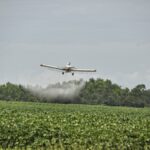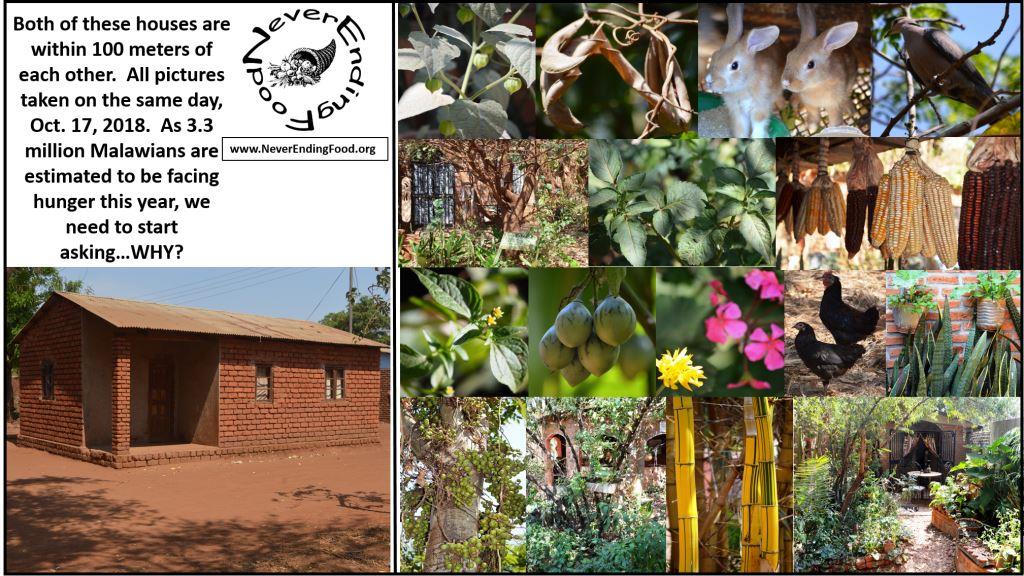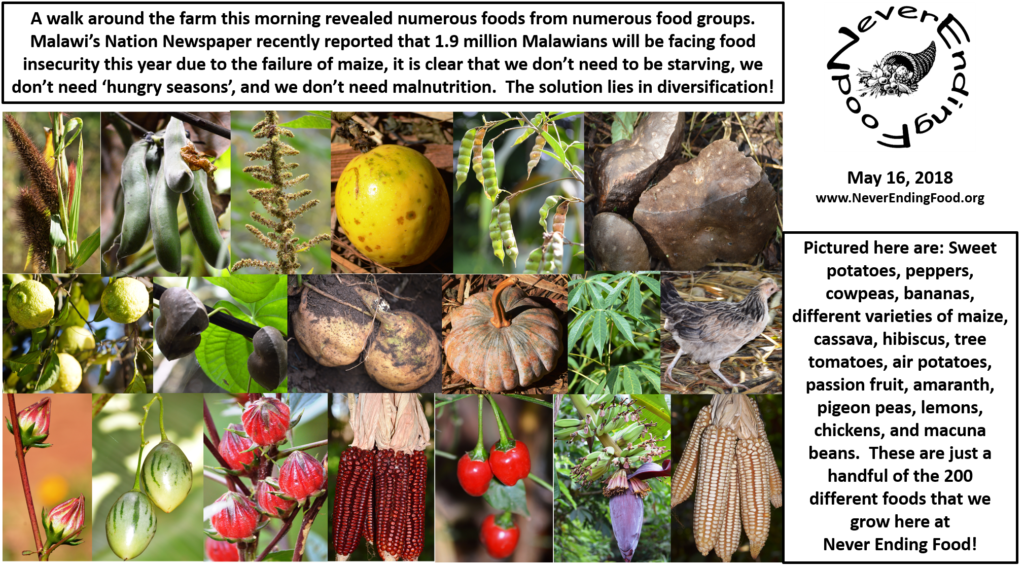
If we reflect for a moment on the course that modern agriculture has taken, it becomes clear that we are not currently moving in a direction which strengthens the cycle of nature, nor our dependence on it. In the last fifty years, we have moved in a direction, which in the words of Permaculture’s founder, Bill Mollison, amounts to “waging war upon the environment”. We have been using the same tactics that would be used in conventional warfare…Airplanes and helicopters drop tons of chemicals each year in an attempt to control the forces of nature. Large equipment has been employed to alter the surface of the earth, manipulating it to conform to our desires. We have been treating the environment as if it is diseased and depends upon us for prescribed courses of medication.
In fact, the latest technology that allows farmers to pinpoint their use of chemicals through the assistance of satellite imagery has been nicknamed “prescription farming”. Plants and animals are being artificially forced to their physical extremes, while entire species of biodiversity are being lost in order to make way for the arrival of these new creations. Entire cultures are becoming dependent on a monocropped system of agriculture, not only for their nutritional needs, but also for their economical survival. Rather than nurturing systems of diversity, many countries’ entire economies have become dependent upon a single agricultural commodity.
In the last fifty years, there has been a push to expand agricultural production world wide. This movement was based on the hybridization of various crops in order to maximize their yields, assist in pest and disease resistance, and encourage adaptation to intensive cultivation methods. It was a movement that was supposed to bring an end to starvation and famine worldwide and was entitled the “Green Revolution”. Farmers throughout the world were encouraged to convert from their conventional agricultural practices to the new improved methods. As these practices have taken hold over the last half of a century, it has given us a chance to assess their benefits and shortcomings. We are only now beginning to see some of the long term results, but it would seem that instead of ending world-wide hunger, the Green Revolution has actually fostered it.

The hybridization process that lent itself to the claims of a new era has had several detrimental effects. Hybridization occurs when genetically dissimilar varieties or species are crossed to produce an offspring. This offspring carries with it the traits of its parents, but also exhibits what is known as “hybrid vigor”. That is, the offspring tends to be larger, faster growing, and healthier than its parental stock. The one major downfall, however, is that the offspring of these plants and animals tend to be sterile. What this has meant for the Green Revolution is that farmers whom once relied on saving and sharing seed from season to season are now forced into buying new hybridized seed each year.
Another drawback to these new varieties of crops is their reliance on chemical fertilizers and pesticides to ensure the success of a harvest. Many farmers, especially in Africa, have also adopted “slash and burn” methods of preparing their farm land for each year’s planting. This process continually denies the return of organic matter to the nature cycle—the very essence of soil structure. As this depletion of organic matter has taken its toll, farmers have resorted to purchasing and applying greater quantities of chemicals to make up the difference. When these farmers, especially in developing countries, have been faced with these issues (the need for annually purchased seed, and the purchasing of chemicals) many have found themselves caught in a cycle of dependency that has actually left them worse off than before the Green Revolution took hold.

In countries like Malawi where personal incomes are often limited, people are finding that they are forced to sell off larger amounts of their yields in order to cover the cost of these growing expenditures. The selling of their crops has deprived many families of annual food reserves, nutritional requirements, and increased standards of living. To compensate for these losses, greater amounts of land are being cleared each year for the cultivation of additional hybridized crops. As these indigenous landscapes are being destroyed to make room for the monocropping of hybrids, we are losing much more than just scenic beauty.
Entire ecosystems, upon which the cycles of nature are dependent, are also being lost—ecosystems that have offered diverse alternatives to generations of humans. These practices have also threatened the survival of many indigenous food plants, which are often more resistant than “introduced” food crops, because they have adapted to their particular environment over hundreds, even thousands, of years. As firewood, medicines, and building supplies have been diminished, they have become commodities that often times must be purchased. Perhaps the greatest loss of all, however, is that the knowledge that generations of people have passed down to one another concerning the nutritional, medicinal, and cultural uses of these plants is also disappearing. As this cycle of dependency widens, the alternatives for creating healthy lifestyles seem to be narrowing.

Instead of recognizing the fact that our manipulation of nature is backfiring, there seem to be efforts being made in the opposite direction. Biotechnologists are creating even more specialized hybrid varieties of plants and animals. Advancements in microbiology are now allowing scientists to control the very building blocks of life—the genetic coding. This has allowed for the introduction of genetically modified crops, which carry with them a variety of implications, ranging from plants that produce their own pesticides to genetic alterations in the plant’s nutritive values. The seed companies have also made modifications to their products.
Instead of looking at how we can replenish our soil to provide a naturally chemical-free, nutrient-rich, and healthy environment for plants to grow in, advancements have even been made in the field of hydroponics, which is the science of growing plants in chemical nutrient solutions, eliminating the very need for soil. Nutritionally, we have moved away from the benefits derived from a diverse plant-based diet, and have turned, instead, towards supplementation and fortification. Dietary requirements can now be readily purchased in the forms of pills, capsules, powders, and mixes. Much of our food arrives in the stores “jet-lagged”, chemically treated, and preserved.
The time has come for sustainable solutions. As Fritjof Capra has stated in his book, The Web of Life, “Reconnecting with the web of life means building and nurturing sustainable communities in which we can satisfy our needs and aspirations without diminishing the chances of future generations.”
The following are a couple of handouts that we use for teaching about the effects of the Green Revolution, Genetic Engineering, and in helping to find solutions to our current problems. They are in PDF format and may be reprinted or used without restriction.
Downloads
Click on link(s) below to download
